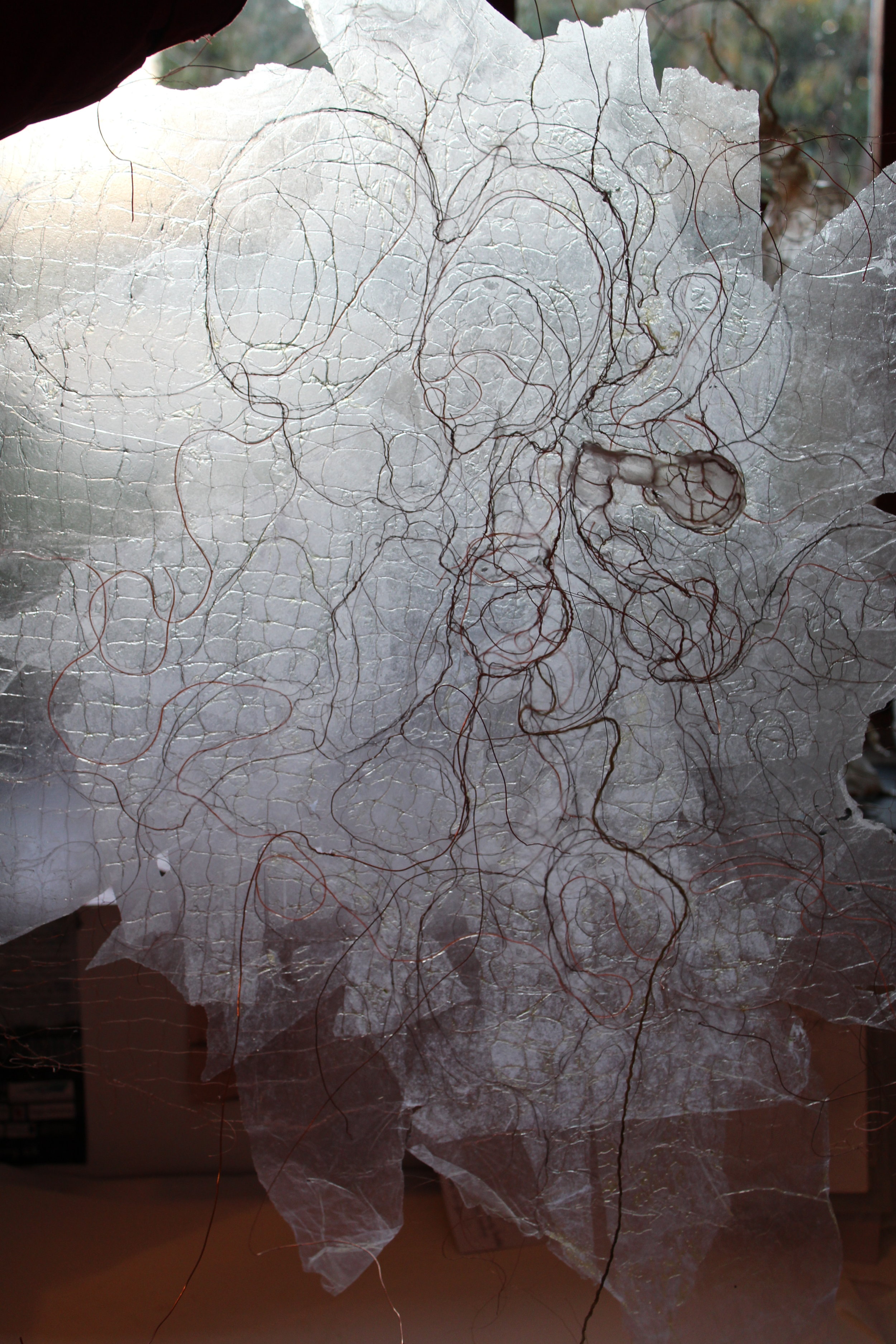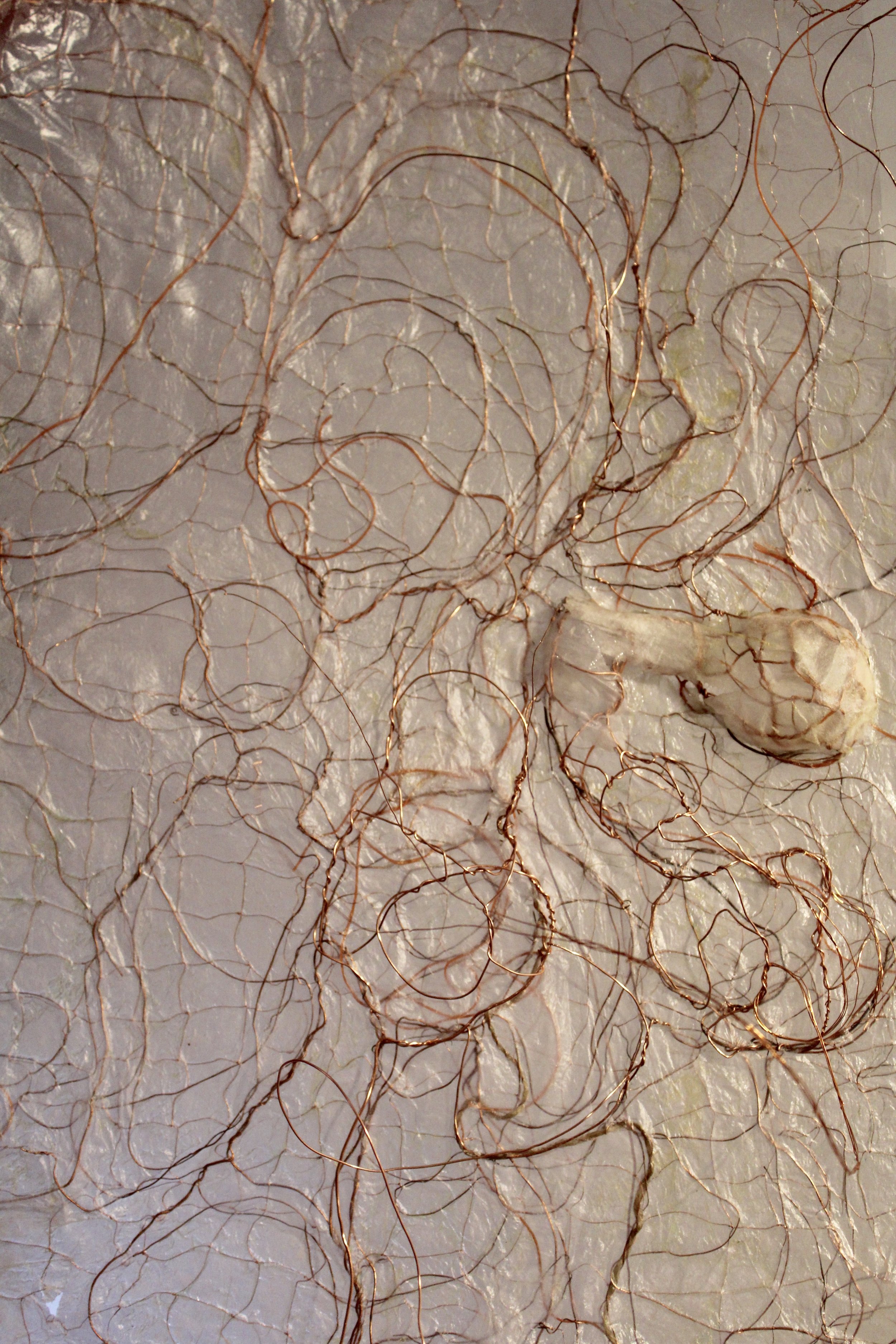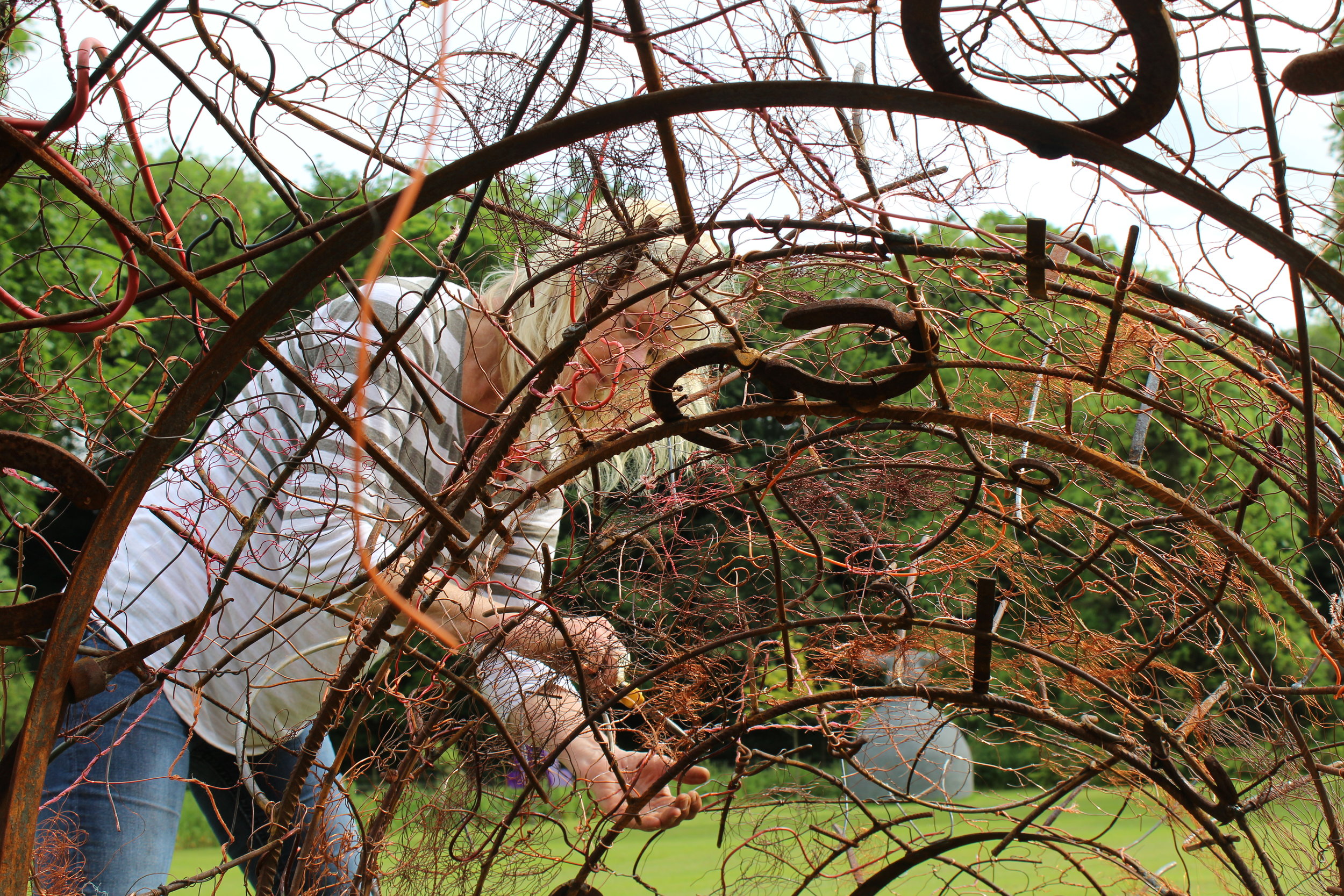
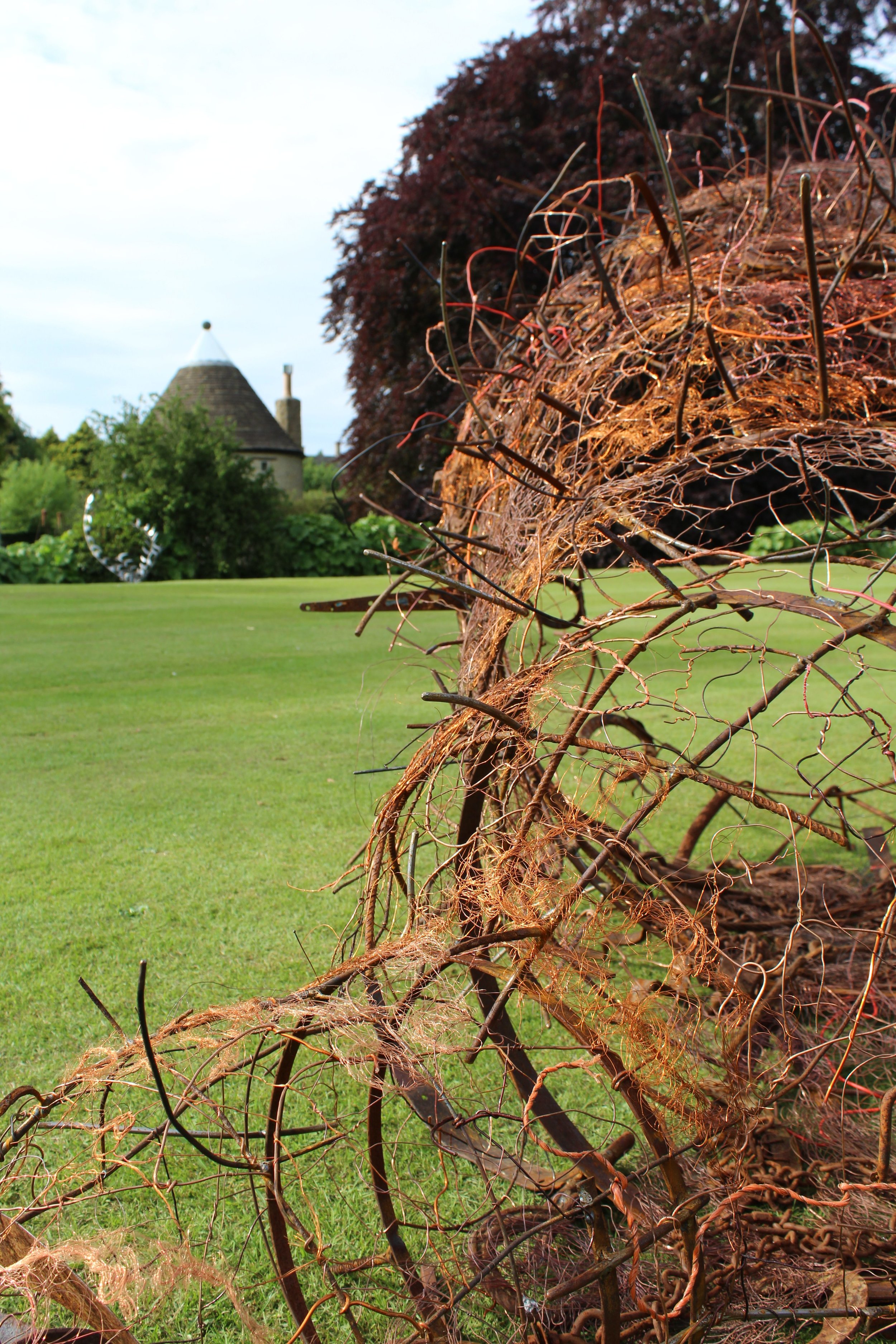
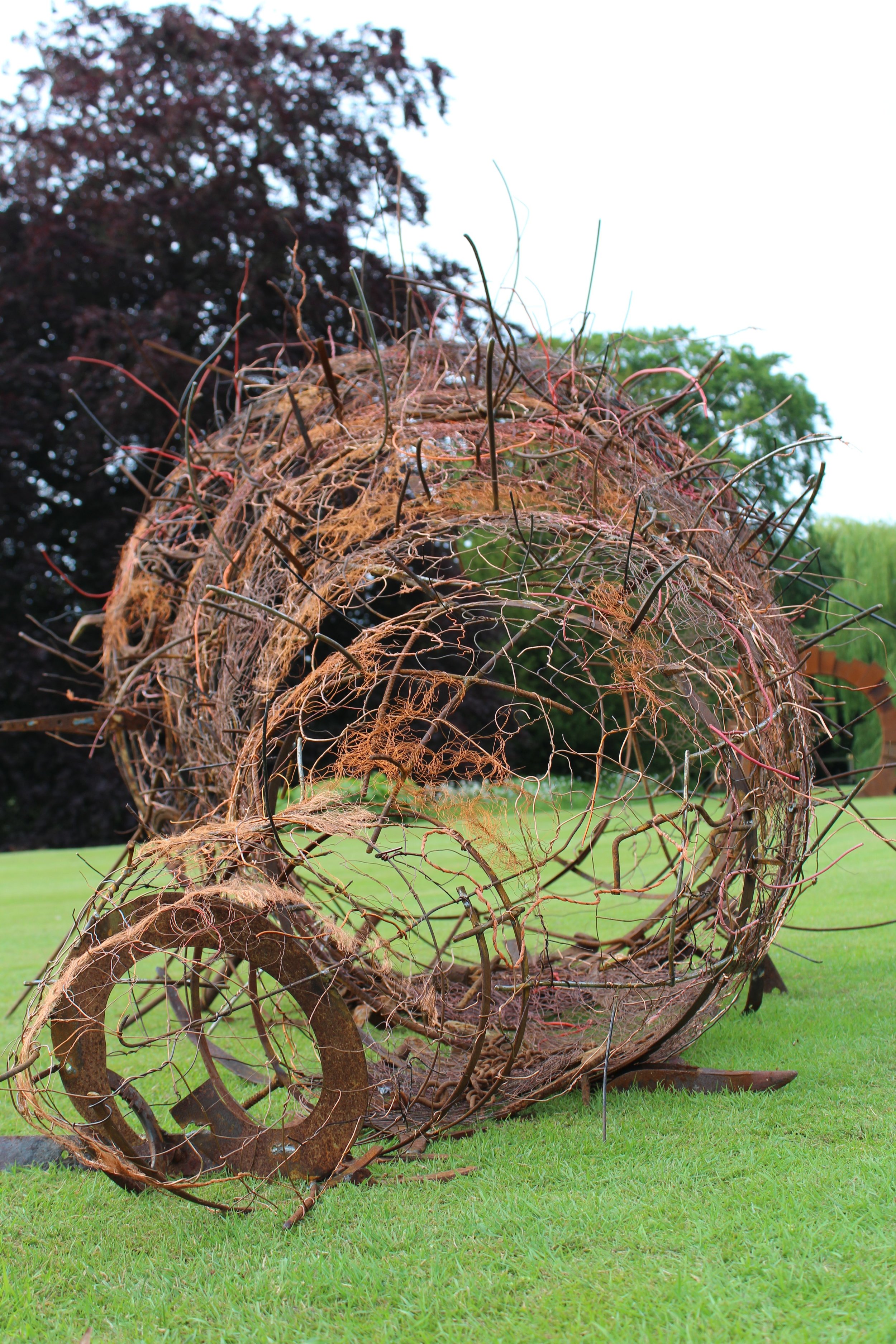
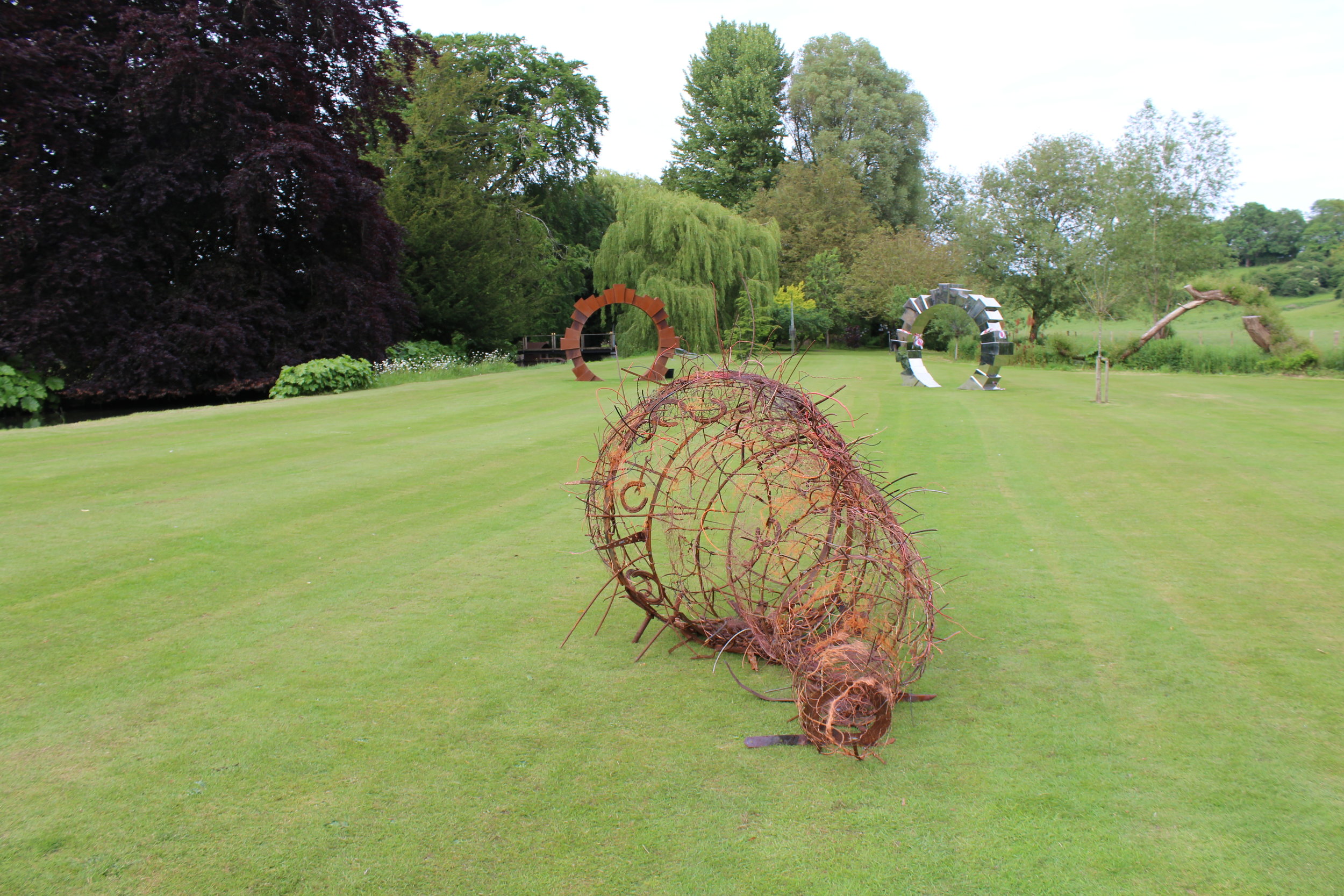 I completed a new piece 'Cocoon' last week for Fresh Air '17. Inspired by the puss moth cocoon and pupa, it is a drawing in space, welded, woven and wrapped. The exhibition starts this weekend and runs until 2 July.
I completed a new piece 'Cocoon' last week for Fresh Air '17. Inspired by the puss moth cocoon and pupa, it is a drawing in space, welded, woven and wrapped. The exhibition starts this weekend and runs until 2 July.
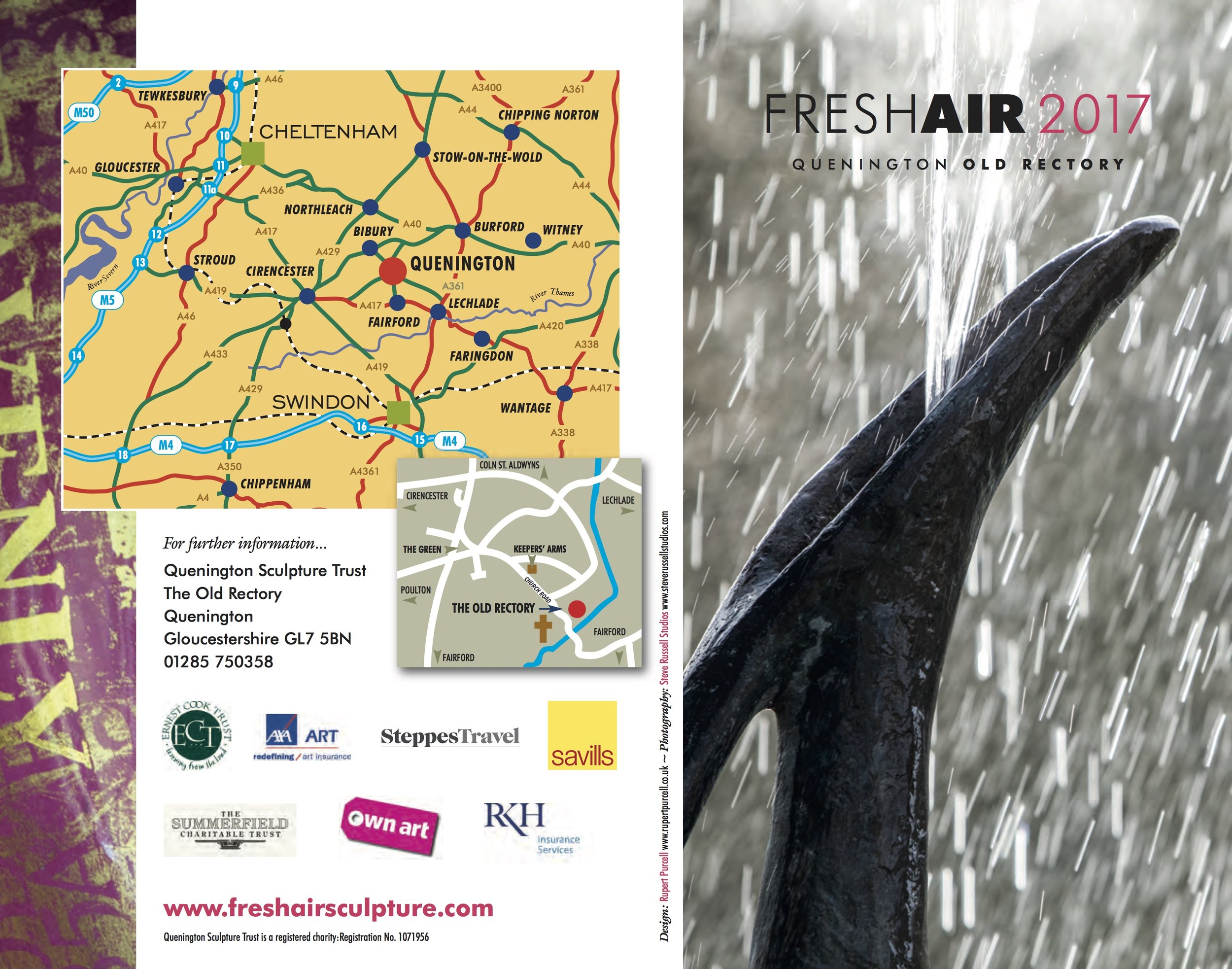
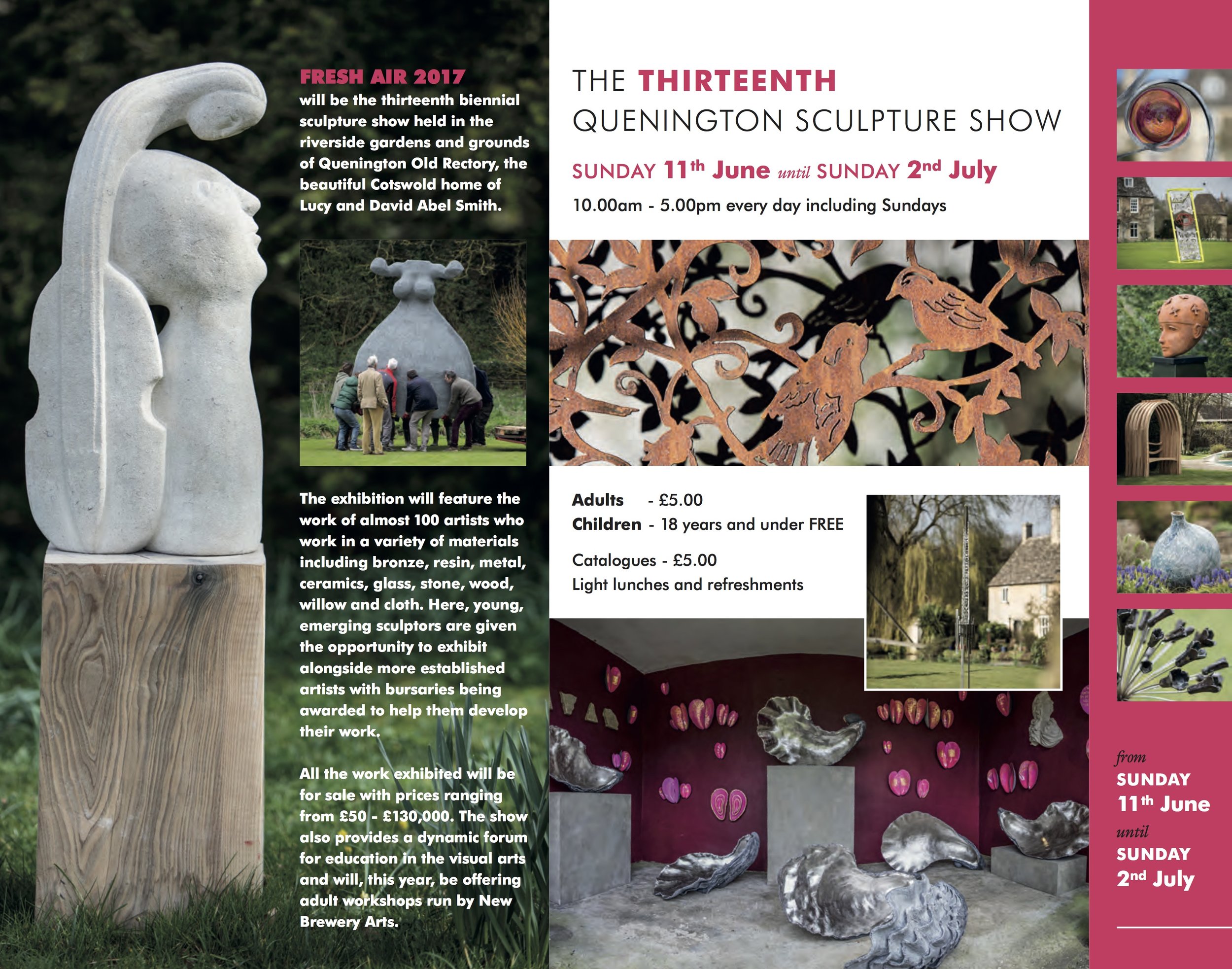
Images of New Work



 I completed a new piece 'Cocoon' last week for Fresh Air '17. Inspired by the puss moth cocoon and pupa, it is a drawing in space, welded, woven and wrapped. The exhibition starts this weekend and runs until 2 July.
I completed a new piece 'Cocoon' last week for Fresh Air '17. Inspired by the puss moth cocoon and pupa, it is a drawing in space, welded, woven and wrapped. The exhibition starts this weekend and runs until 2 July.


Just a brief update on a few exhibitions and events that I’m taking part in this Spring. I hope you will be able to visit some of them. ‘The Future Can’t Wait’, recently opened in the Long Gallery, Black Swan Arts Centre, 2 Bridge St, Frome, Somerset BA11 1BB, 18 March – 5 April (see attached poster/invite). A show of exhibits from 30 Bath Spa MA postgraduate students across four disciplines - ceramics, fashion and textiles, fine art and visual communication.
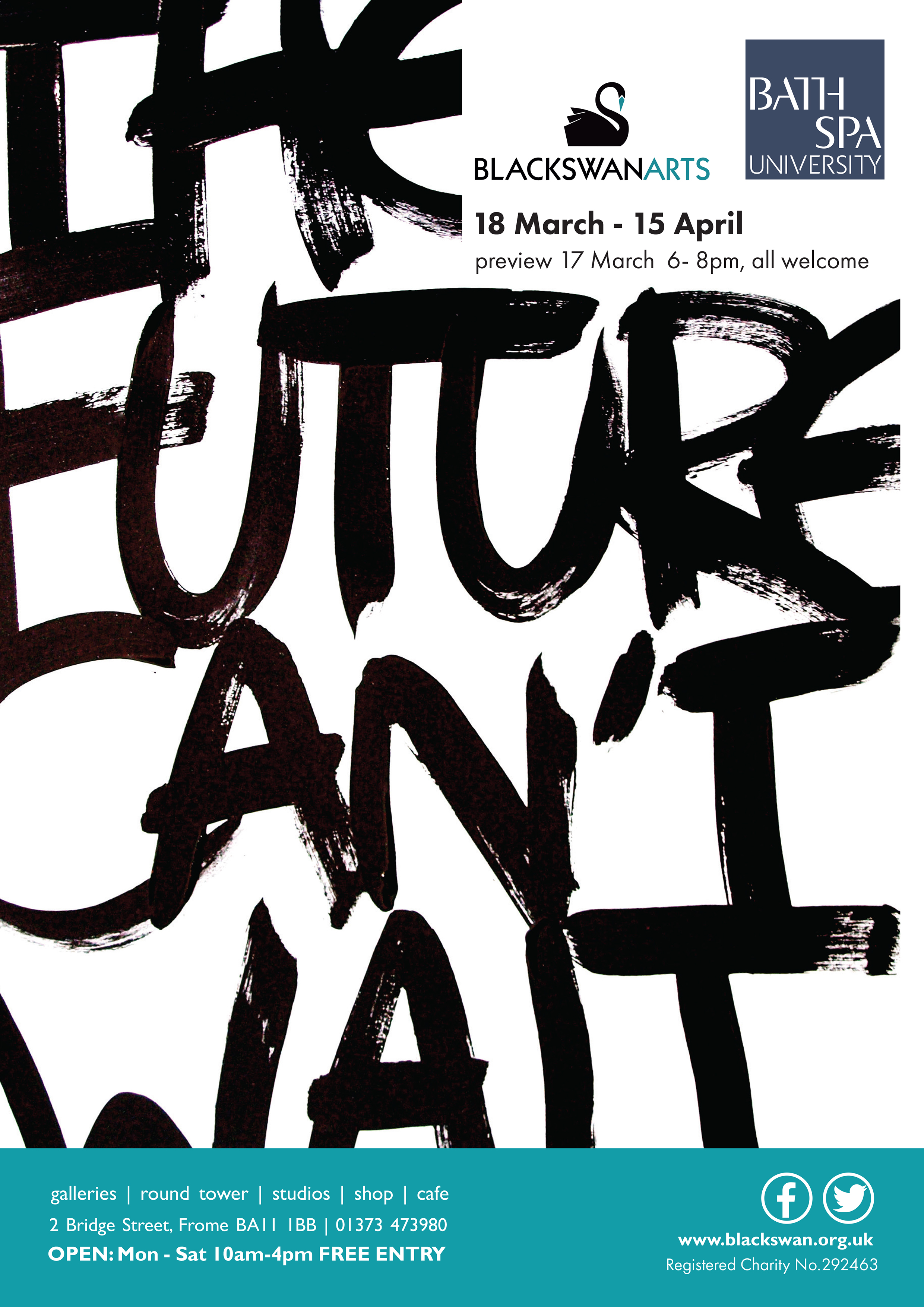
I’ve been involved in linking this up with BBC’s get-creative-weekend. On Saturday 8 April, from 2-4pm, Black Swan artisans will be offering drop-in taster workshops for adults and children over ten years old, and MA artists will work with young people offering activities for children of all ages, exploring concepts of their current exhibition. I will be doing one of the workshops.
I’m still working on my piece for Fresh Air ’17. Too large now for my studio, I am making it outdoors. Spring weather is helping a lot! Quenington Old Rectory, Quenington, Cirencester, Gloucestershire GL7 5BN, 11 June – 2 July, open daily 10am-5pm, (£5 Adults, children free).
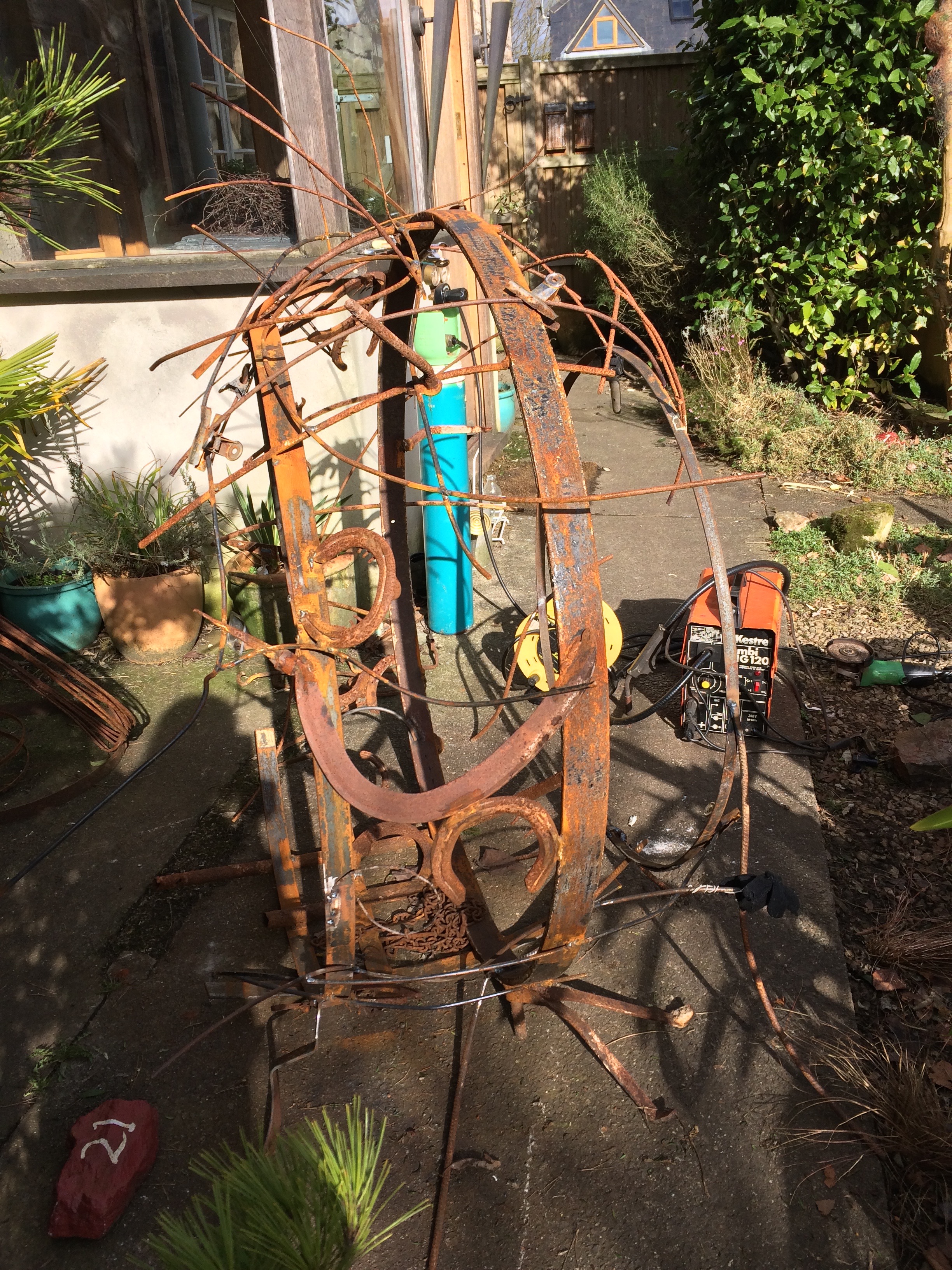
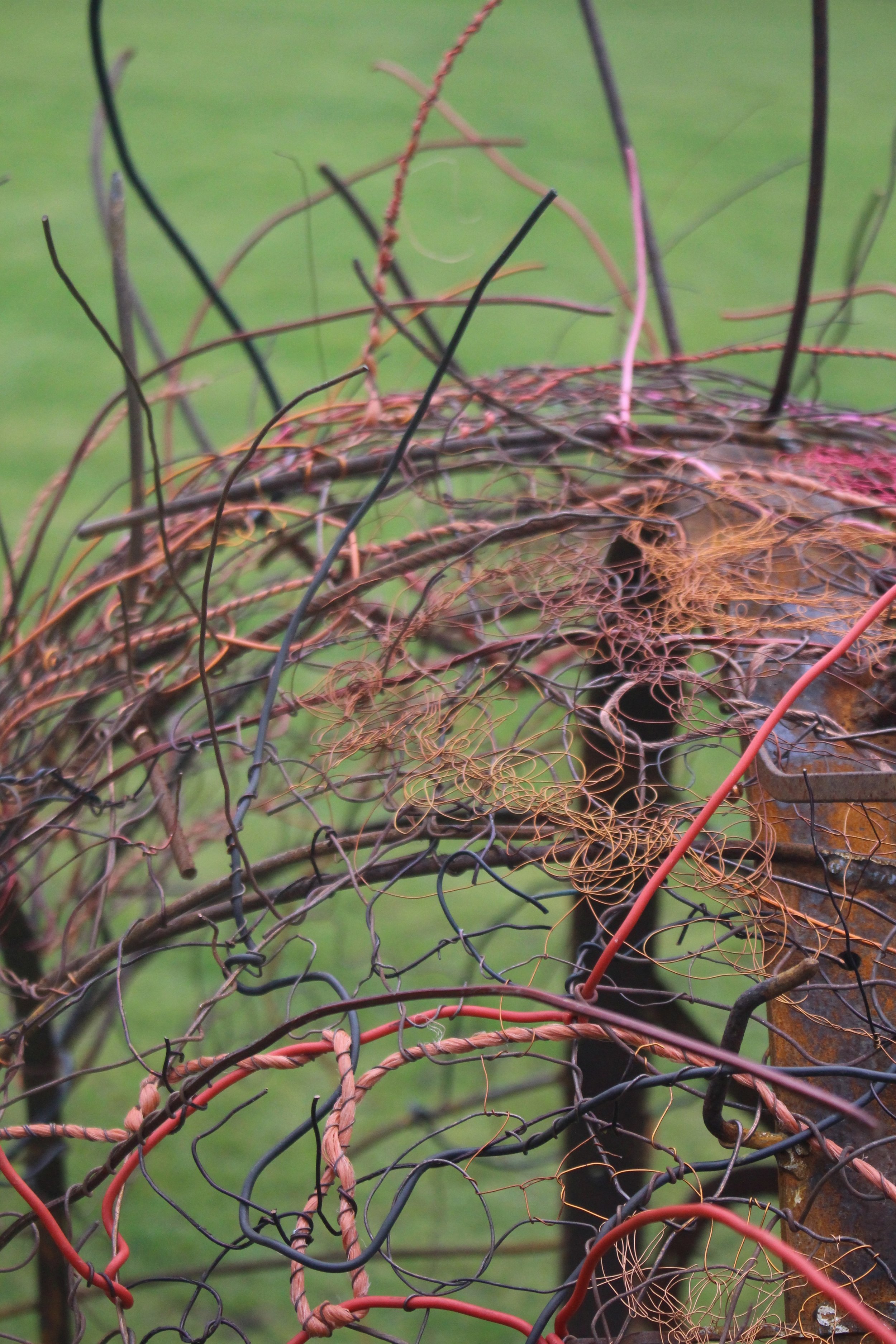
I’m also making a small sculpture for Fifty BEES: The Interconnectedness of All Things, at ACEarts, Somerton, 1-22 July, open Tues – Sat, 10am-5pm. The topic is close to my heart.
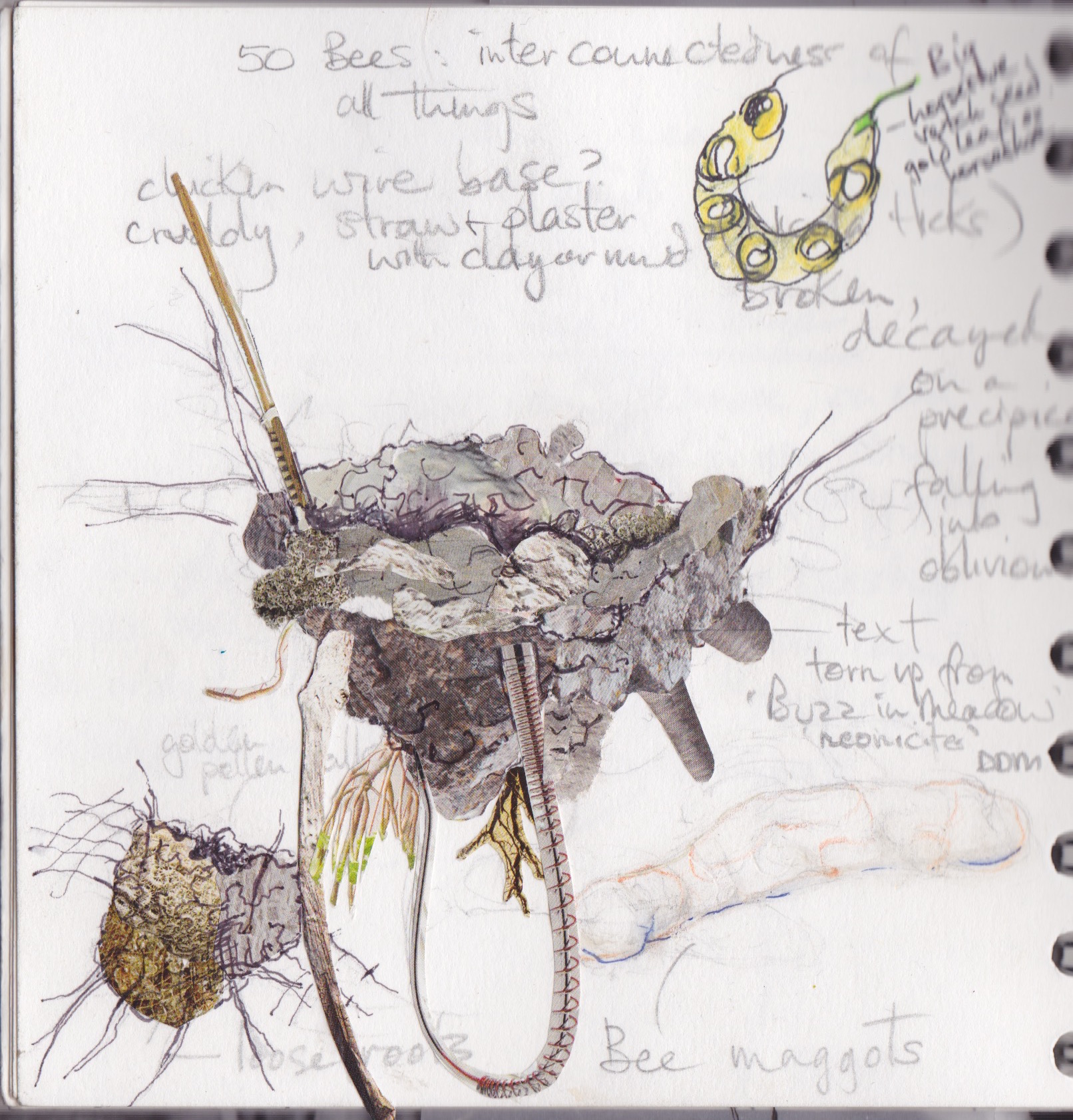
Have a lovely Spring!
Months of research and writing for research methodologies on my MA is now finally over and I am looking forward to focusing more on developing my practice. I have been looking at worms. I studied an earthworm through a magnifying glass. Its semi-transparent body enabled me to view its internal organs which buckle and coil as it moves. I am intrigued by a pulsating deep pink artery that runs centrally through the length of their bodies, delineating this coiling movement. My ideas are revolving around lead lines, reinforced with steel rod in parts, that suggest huge 3d worm forms, skeletal, with linear coiled pink innards made from copper wire, heated red glass, orange twine and plastic strands. This may change, perhaps it will seem too representational, although the expansive forms meandering through space could be quite breathtaking.
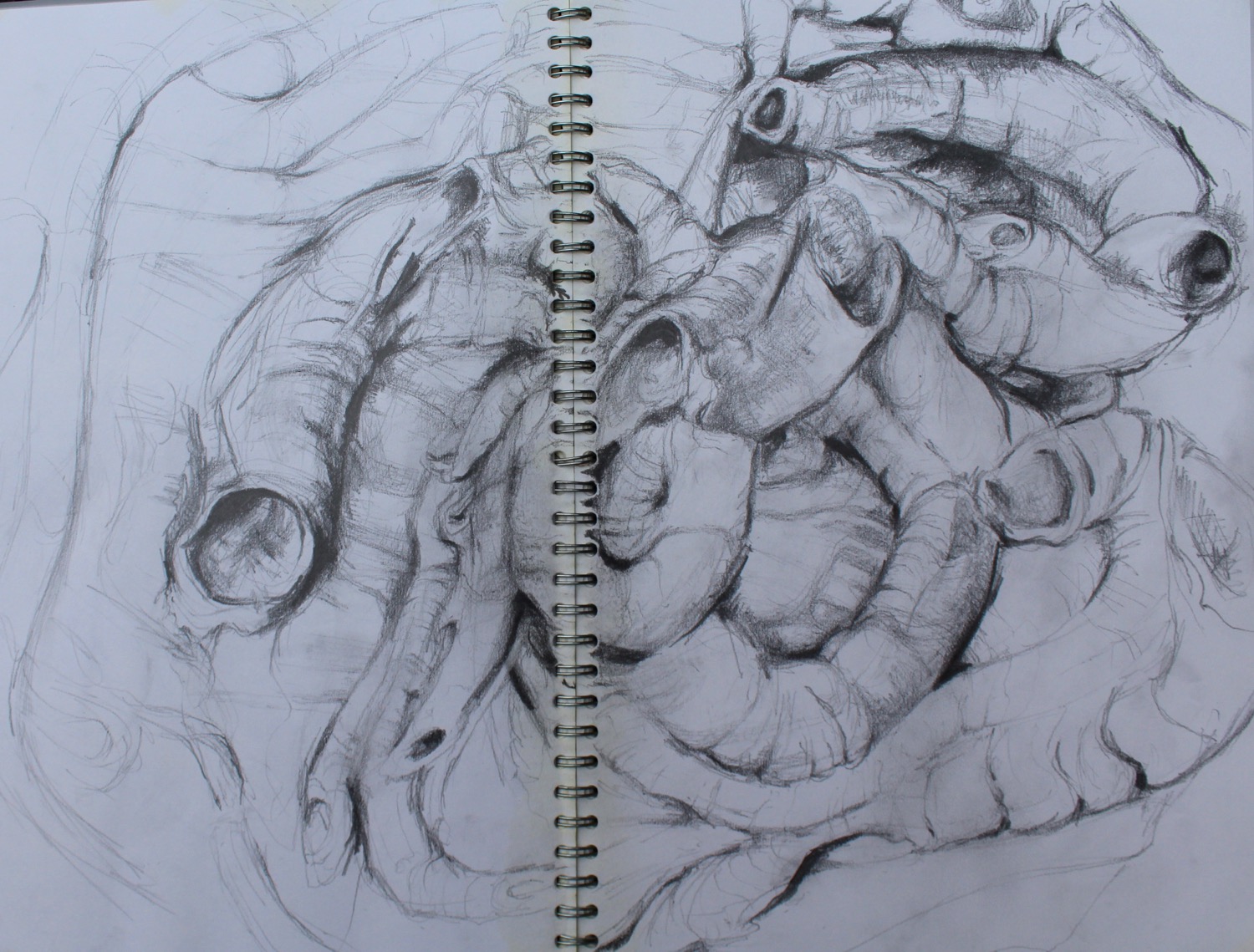
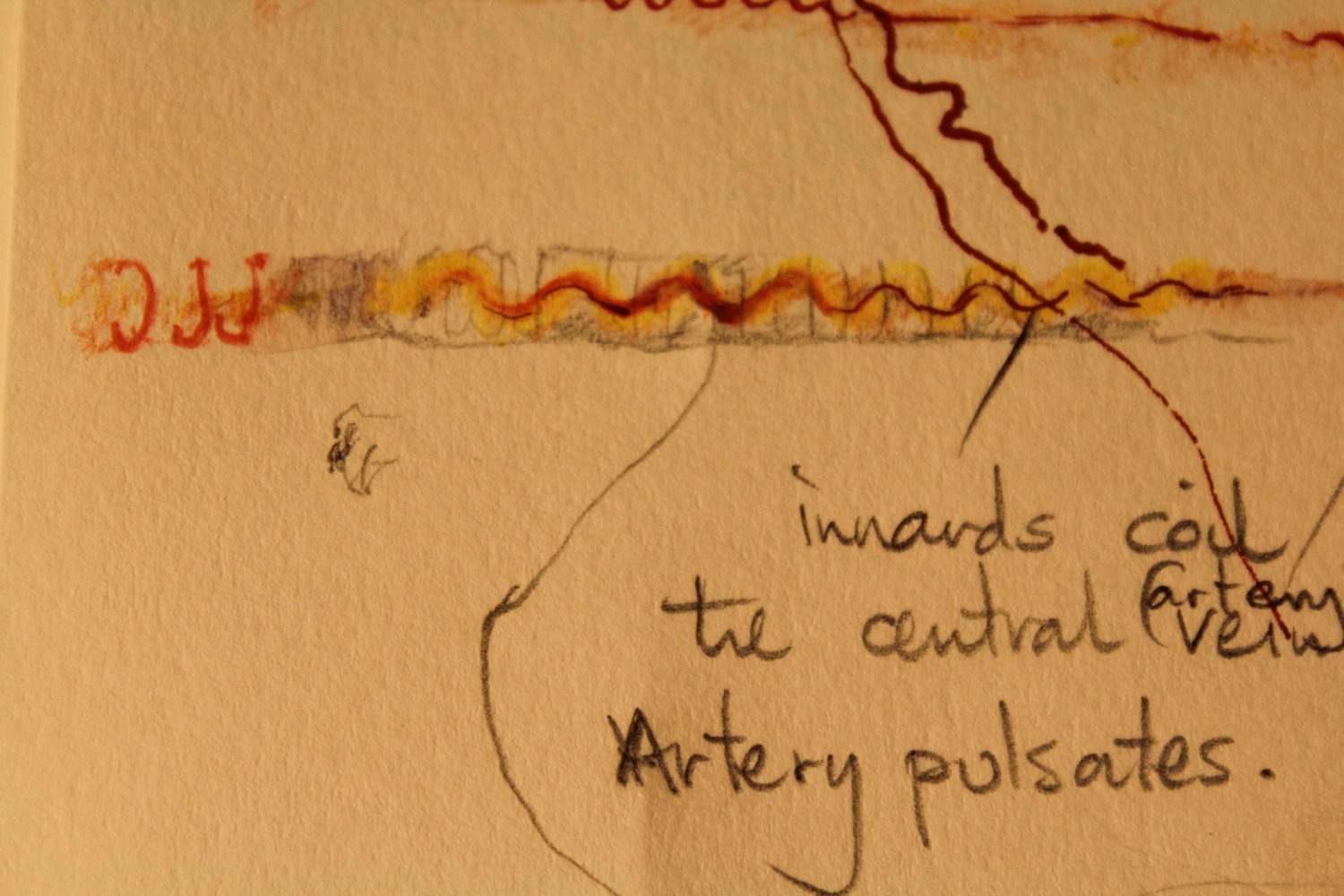
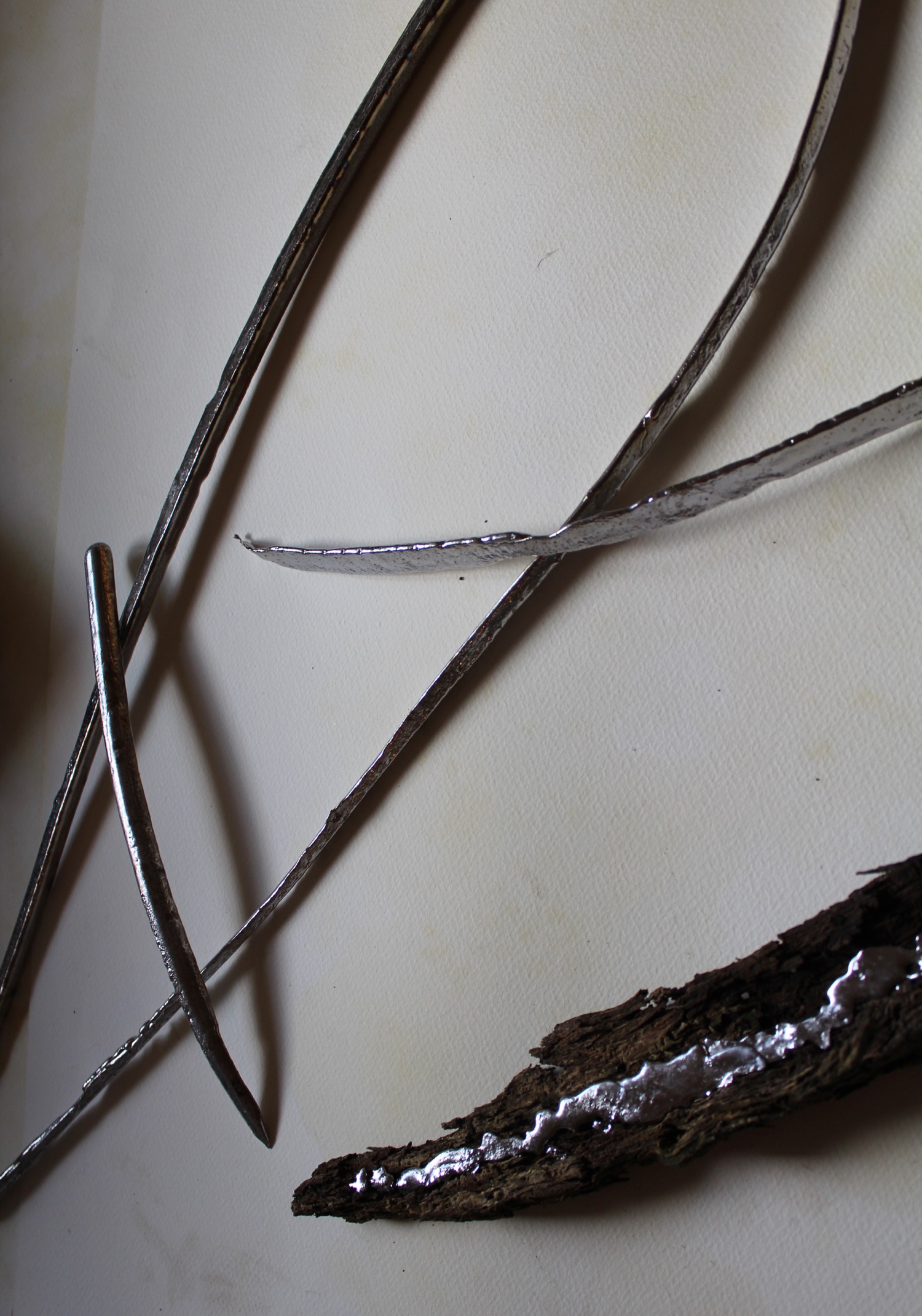
As an experiment, I have created a small worm colony in an old fish tank, with dead leaves for them to munch. In a few weeks I plan to remove the worms by attracting them to the top, then cast their tunnels. If it works, it will be interesting to see what their tunnels look like, how they interconnect.
I have cast some more 3d lead lines, using routed wood blocks as moulds, made with a friend (Nick Weaver)’s help. The wooden lines were gouged with 4 different router cutters, so that I have a range of curved and v-shaped lines. The process was slow, as the lead didn’t melt properly on my studio electric hob, until I directed a gas blowtorch flame into the hot pan too. When I poured, the slag remained in the pan, so the lines were smooth, clean lead. I am considering how these might become more 3d, or whether they don't need to, and how to convey message with method and materials, creating forms that carry natural associations, bridging the gap between science and art.
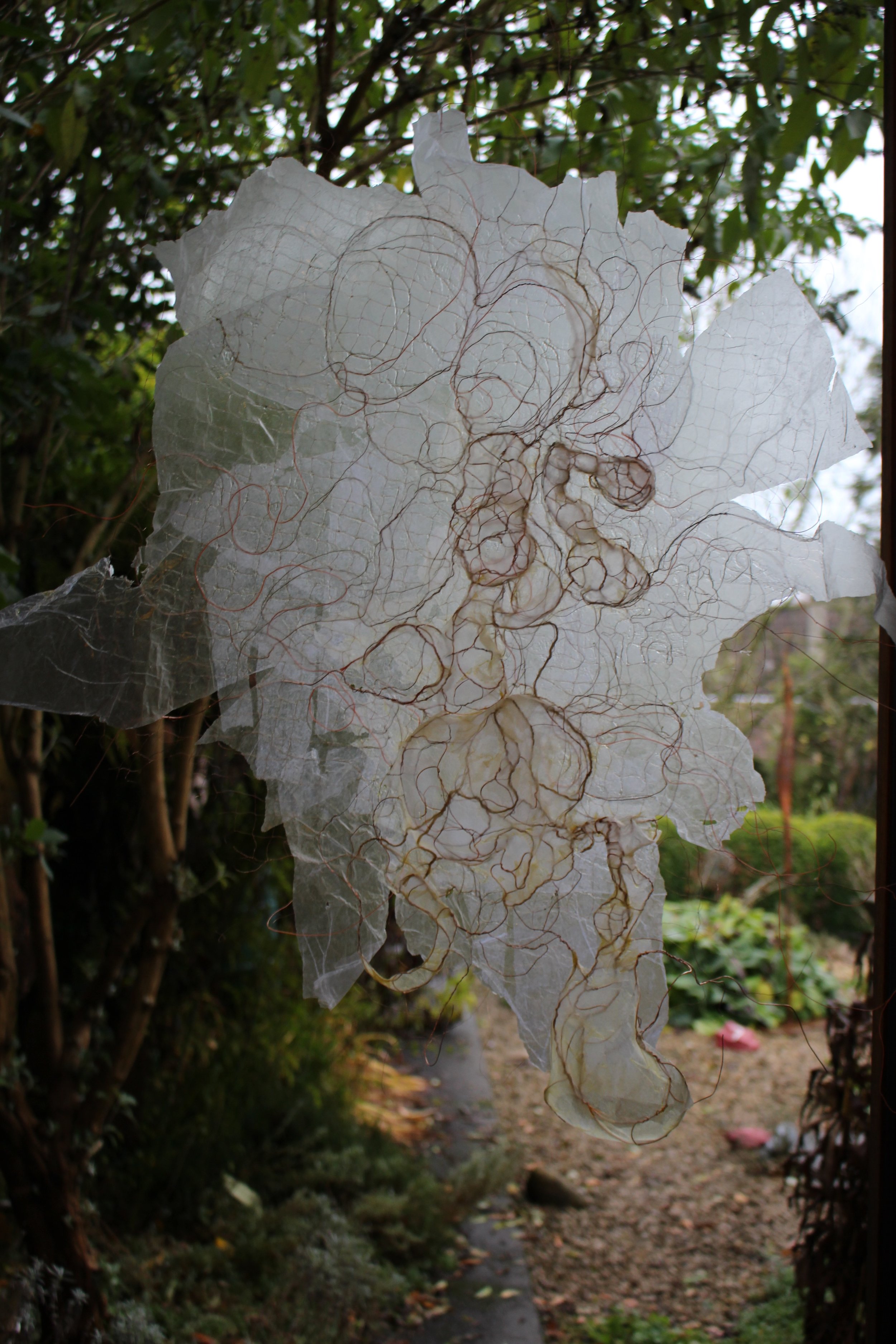
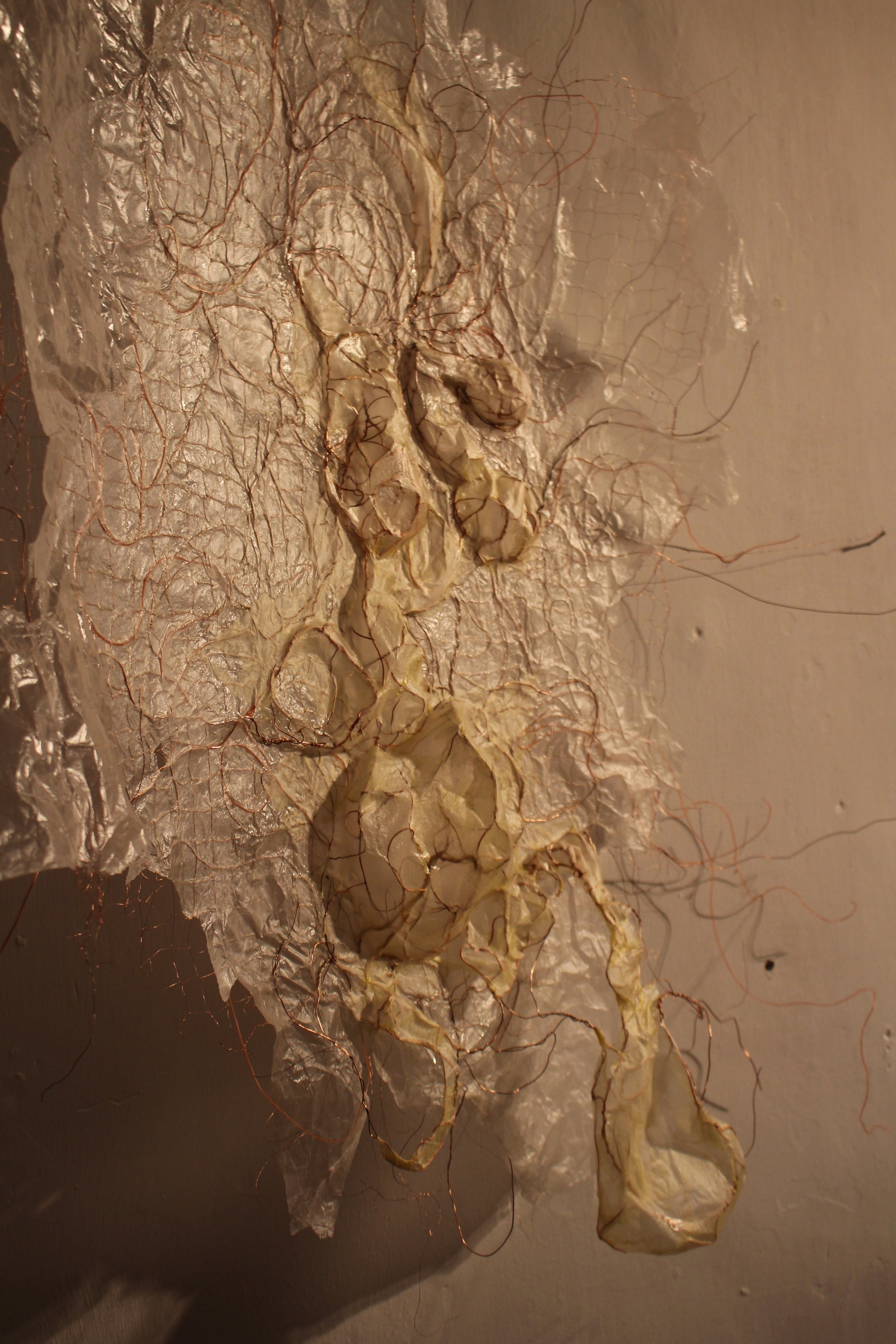 Since finishing my egg sac drawing/sculpture (above), worms have been a recent preoccupation. Last week I went on a worm hunt (in a harmless way) to photograph and draw them for my research. There’s a special technique for this: by vibrating the earth, they rise to the surface (apparently to seek mates in the rain – more important than the fear of being pecked by birds or moles).
Since finishing my egg sac drawing/sculpture (above), worms have been a recent preoccupation. Last week I went on a worm hunt (in a harmless way) to photograph and draw them for my research. There’s a special technique for this: by vibrating the earth, they rise to the surface (apparently to seek mates in the rain – more important than the fear of being pecked by birds or moles).

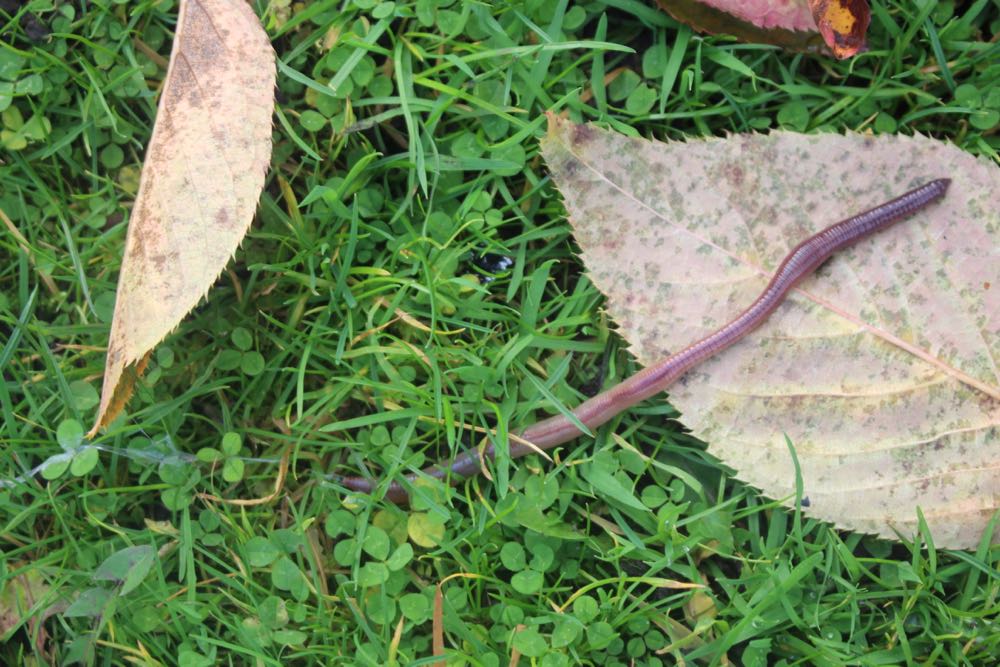
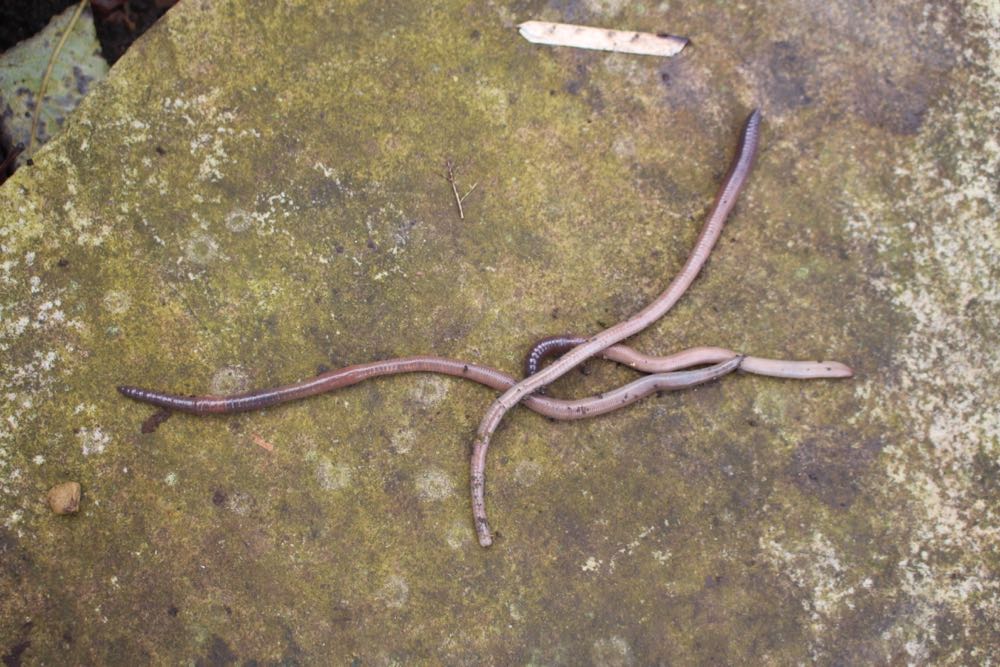
This is a layer of research over my investigation into possible uses of graphite (and linseed oil) as a medium. Graphite, interestingly, is a form of carbon, which, I’ve recently learnt, is a primary element (4th most abundant in the universe) that comes from the beginnings of life – brought from the stars via buckyballs. All living things contain carbon in some form. Julio Gonzalez, when he first coined the expression ‘to draw in space’ was initially inspired by constellations and the points between them as a metaphor for drawing in space. Graphite, due to its carbon property, is the thinnest medium and can stretch to only 1 atom thick, whilst retaining great strength.
Earth worms have been of interest to me for several years.
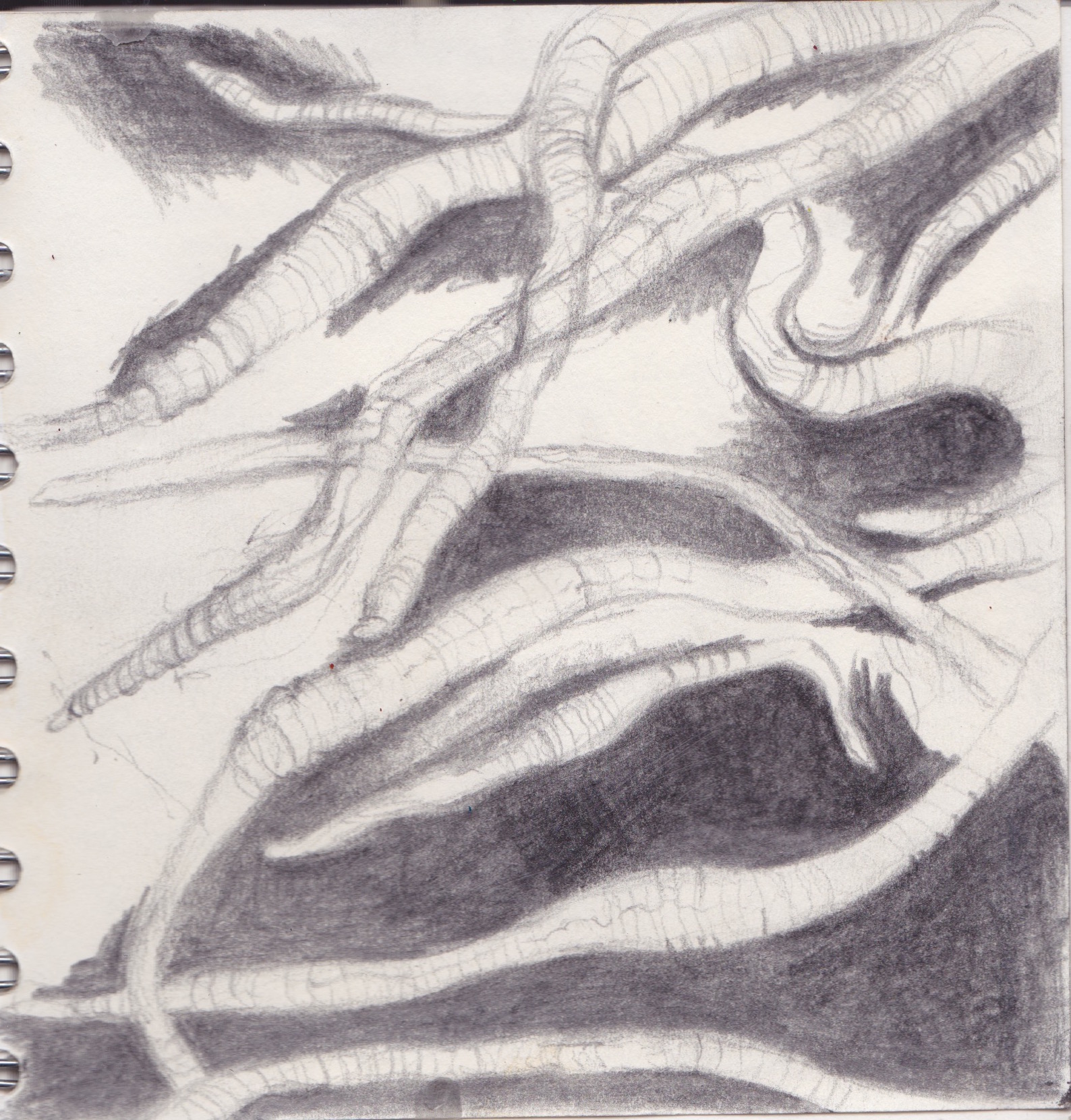
I respect their status as recyclers and importance within the cycle of life. I like their grey to maroon transparent skin tones (some with clearly visible red veins delineating their contours as they move) and their form that resembles many others – limbs, tree roots/branches, neurons, filaments...
I hope to create a series of works in 2-d and 3-d – drawings/sculptures/installations that could be immersive, possibly worm-like! The drawings might start flat on oiled paper with graphite, leading to graphite as 3-d. I need to explore other possibilities - perhaps using perpex to back the paper so it can arc into space. It's early days, and seems a little slow to get going, but I'm enjoying the process of investigation.
My MA course at Bath Spa is all-consuming. I've been engrossed in research and explorative studies, leaving little time to add new posts here. To see what I've been up to, here is a blog/journal, which logs my progress and an image of a drawing I'm working on at the moment: https://fionacampbellblog.wordpress.com
